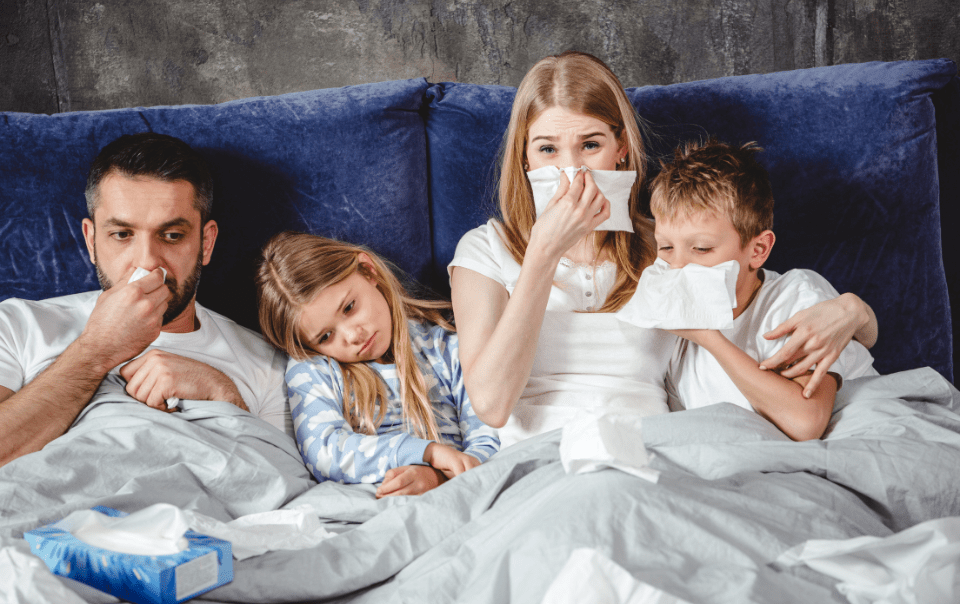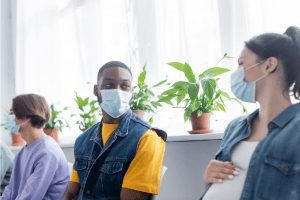In the midst of seasonal transitions, the onset of sneezing, coughing, and fatigue can leave many individuals questioning the nature of their illness. Distinguishing between a common cold, the flu, COVID-19, and seasonal allergies is crucial for proper management and public health considerations.
The Common Cold: A Widespread Affliction
The common cold, an ailment seemingly as ubiquitous as the changing seasons, affects millions worldwide, transcending geographical boundaries and demographic distinctions. Symptoms typically include a runny or stuffy nose, sneezing, sore throat, and mild fatigue. Unlike the flu or COVID-19, cold symptoms tend to manifest gradually and are usually milder.
According to the American Lung Association, adults in the United States can expect to grapple with an average of 2-3 colds per year, while children may endure even more. This statistic underscores the pervasive nature of the common cold and its substantial impact on public health.
Despite its prevalence, the common cold remains a challenge to manage due to the sheer number of viruses that can cause it. Rhinoviruses, coronaviruses, and adenoviruses, among others, contribute to the array of culprits responsible for the familiar symptoms of sneezing, congestion, and sore throat. As we delve into the nuances of this seemingly mundane yet persistent malady, a deeper understanding of its prevalence and impact emerges, prompting exploration into effective preventive measures and potential advancements in treatment.
Preventative measures, such as frequent handwashing and avoiding close contact with those who are sick, can help reduce the risk of catching a cold. Over-the-counter medications may offer relief from symptoms, but rest and hydration remain crucial for recovery.
Influenza: A Potent Respiratory Invader
Influenza, commonly known as the flu, stands as a formidable annual adversary, causing significant morbidity and mortality on a global scale. According to the World Health Organization (WHO), approximately 1 billion people develop the flu each year, leading to 3 to 5 million severe cases and up to 650,000 respiratory-related deaths. These staggering statistics underscore the profound impact of the flu on public health and the imperative for comprehensive preventive strategies.
The influenza virus, with its ever-evolving strains, presents a challenge to healthcare systems worldwide. Seasonal flu epidemics are responsible for a considerable burden on healthcare infrastructure, leading to hospitalizations, missed workdays, and economic repercussions. Beyond the typical symptoms of fever, cough, and muscle aches, the flu can lead to severe complications, especially in vulnerable populations such as the elderly, young children, and individuals with underlying health conditions.
As we delve into the intricacies of influenza, it becomes apparent that a multi-faceted approach, including vaccination, surveillance, and public health initiatives, is paramount in mitigating its impact. This exploration seeks to unravel the complexities of influenza, shedding light on its global prevalence and the ongoing efforts to safeguard communities against its pervasive threat.
The Flu vs the Common Cold
The flu, or influenza, shares some similarities with the common cold but tends to be more severe and sudden in onset. Flu symptoms include fever, chills, muscle aches, fatigue, and respiratory issues like coughing and congestion. While cold symptoms primarily affect the upper respiratory tract, the flu can impact both the upper and lower respiratory systems.
Annual flu vaccination is a key preventive measure, providing immunity against specific influenza strains. Antiviral medications are available for those at high risk or with severe symptoms, but early intervention is essential.
COVID-19: Unprecedented Challenges
The global COVID-19 pandemic has brought a new layer of complexity to respiratory illnesses. COVID-19 symptoms are often mild to severe and typically include cough, fever, fatigue, shortness of breath, fatigue, body aches, loss of taste or smell, sore throat, and gastrointestinal symptoms.
Testing for COVID-19, especially when experiencing symptoms, is crucial for prompt isolation and appropriate medical guidance. Vaccination has proven effective in reducing the severity of symptoms and preventing severe outcomes, underscoring the importance of vaccination efforts.
Seasonal Allergies: Nature’s Misdirection
Seasonal allergies, or hay fever, often mimic the symptoms of colds and respiratory infections. Common triggers include pollen from trees, grasses, and weeds. Symptoms include sneezing, nasal congestion, itchy or watery eyes, and fatigue.
Antihistamines and nasal corticosteroids are commonly used to manage allergy symptoms. Identifying specific triggers and implementing preventive measures, such as keeping windows closed during peak pollen seasons, can help mitigate allergic rhinitis and reactions.
Navigating the Diagnostic Challenges
Distinguishing between these illnesses can be challenging due to overlapping symptoms. Fever, fatigue, and respiratory symptoms are shared among the common cold, flu, and COVID-19. Testing for COVID-19 is a critical step when uncertainty arises, especially given the potential for severe outcomes and the need to prevent the spread of the virus.
Consulting healthcare professionals for a proper diagnosis is essential, as they can consider individual health histories, conduct necessary tests, and provide guidance on the most appropriate course of action. Public health guidelines also play a crucial role in managing and preventing the spread of contagious illnesses.
Public Health Considerations: Testing and Vaccination
Testing for COVID-19 is widely available, and individuals experiencing symptoms or with potential exposure should seek testing promptly. With the emergence of new variants, ongoing surveillance, and testing efforts remain critical to controlling the spread of the virus.
Vaccination against the flu and COVID-19 is a cornerstone of public health efforts to reduce the impact of respiratory illnesses. Annual flu vaccination is recommended for everyone aged six months and older, while COVID-19 vaccination is recommended for eligible individuals, with booster shots advised to enhance and prolong immunity.
Preventative Measures and Good Hygiene Habits
Regardless of the specific illness, certain preventative measures can help reduce the risk of respiratory infections. These include:
- Frequent Handwashing: Regular handwashing with soap and water for at least 20 seconds is effective in preventing the spread of viruses.
- Respiratory Hygiene: Covering the nose and mouth with a tissue or elbow when coughing or sneezing helps prevent the release of respiratory droplets.
- Social Distancing: Avoiding close contact with sick individuals and
maintaining physical distance, especially in crowded places, helps reduce the risk of infection.
- Face Masks: Wearing face masks, particularly in indoor and crowded settings, remains a valuable tool in preventing the transmission of respiratory viruses.
- Vaccination: Staying up-to-date with vaccinations, including flu and COVID-19 vaccines, contributes to personal and community immunity.
Seeking Medical Attention
While many respiratory illnesses can be managed at home with rest, hydration, and over-the-counter medications, certain warning signs warrant prompt medical attention. These include difficulty breathing, persistent chest pain or pressure, confusion, inability to stay awake or alert, and bluish lips or face.
Individuals experiencing symptoms that could be indicative of COVID-19, such as fever, cough, and loss of taste or smell, should seek testing promptly and follow public health guidelines for isolation.
Conclusion: Navigating the Seasons of Illness
In the intricate dance of seasonal transitions, respiratory illnesses cast a shadow of uncertainty. Distinguishing between a cold, flu, COVID-19, and seasonal allergies requires a keen understanding of symptoms, diagnostic testing, and adherence to public health guidelines. Vaccination, good hygiene practices, and prompt medical attention when needed are essential elements in navigating the seasons of illness and fostering individual and community well-being.


 maintaining physical distance, especially in crowded places, helps reduce the risk of infection.
maintaining physical distance, especially in crowded places, helps reduce the risk of infection.